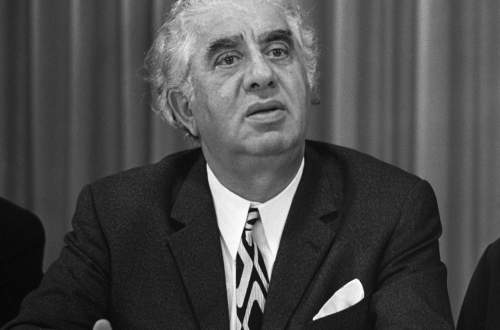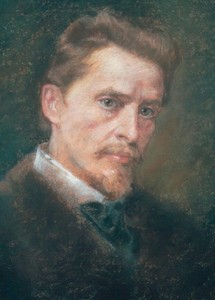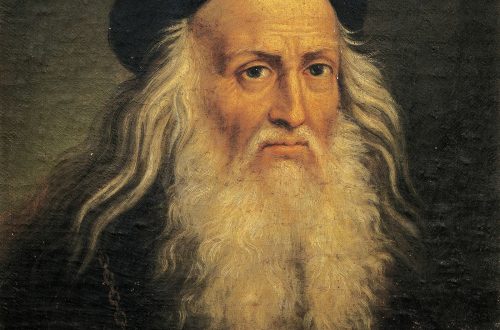
Giovanni Pierluigi da Palestrina |
Giovanni Pierluigi from Palestrina
The outstanding Italian composer of the XNUMXth century, the unsurpassed master of choral polyphony, G. Palestrina, along with O. Lasso, is one of the most important figures in the music of the late Renaissance. In his work, extremely extensive both in volume and in the richness of genres, the art of choral polyphony, which developed over several centuries (mainly by composers of the so-called Franco-Flemish school), reached its highest perfection. The music of Palestrina achieved the highest synthesis of technical skill and the demands of musical expression. The most complex interweaving of the voices of the polyphonic fabric nonetheless add up to a harmoniously clear and harmonious picture: the skillful possession of polyphony makes it sometimes invisible to the ear. With the death of Palestrina, an entire era in the development of Western European music went into the past: the onset of the XNUMXth century. brought new genres and a new worldview.
Palestrina’s life was spent in a calm and concentrated service to her art, in her own way she corresponded to his artistic ideals of balance and harmony. Palestrina was born in a suburb of Rome called Palestrina (in ancient times this place was called Prenesta). The name of the composer comes from this geographical name.
Almost all his life Palestrina lived in Rome. His work is closely connected with the musical and liturgical traditions of the three largest Roman cathedrals: Santa Maria della Maggiore, St. John Lateran, St. Peter. Since childhood, Palestrina sang in the church choir. In 1544, while still a very young man, he became an organist and teacher in the cathedral of his native city and served there until 1551. Documentary evidence of the creative activity of Palestrina during this period is absent, but, apparently, already at that time began to master the traditions of the genre of mass and motet, which would later take the main place in his work. It is probable that some of his masses, later published, were already written during this period. In 154250 The bishop of the city of Palestrina was Cardinal Giovanni Maria del Monte, later elected pope. This was the first powerful patron of Palestrina, and it was thanks to him that the young musician began to appear frequently in Rome. In 1554 Palestrina published the first book of masses dedicated to his patron.
On September 1, 1551, Palestrina was appointed leader of the Giulia Chapel in Rome. This chapel was the musical institution of St. Peter’s Cathedral. Thanks to the efforts of Pope Julius II, it was reorganized in its time and turned into an important center for the training of Italian musicians, in contrast to the Sistine Chapel, where foreigners predominated. Soon Palestrina goes to serve in the Sistine Chapel – the official musical chapel of the Pope. After the death of Pope Julius II, Marcellus II was elected as the new pope. It is with this person that one of the most famous works of Palestrina, the so-called “Mass of Pope Marcello”, published in 1567, is connected. According to legend, in 1555 the pope gathered his choristers on Good Friday and informed them of the demand to make the music for Passion Week more appropriate this event, and the words more distinct and clearly audible.
In September 1555, the strengthening of strict procedures in the chapel led to the dismissal of Palestrina and two other choristers: Palestrina was married by that time, and the vow of celibacy was part of the charter of the chapel. In 1555-60. Palestrina directs the chapel of the Church of St. John Lateran. In the 1560s he returned to the Cathedral of Santa Maria della Maggiore, where he had once studied. By this time, the glory of Palestrina had already spread beyond the borders of Italy. This is evidenced by the fact that in 1568 he was made an offer on behalf of Emperor Maximilian II to move to Vienna as an imperial bandmaster. During these years, the work of Palestrina reaches its highest peak: in 1567 the second book of his masses is published, in 1570 the third. His four-part and five-part motets are also published. In the last years of his life, Palestrina returned to the post of head of the Giulia Chapel at St. Peter’s Cathedral. He had to endure many personal hardships: the death of his brother, two sons and wife. At the very end of his life, Palestrina decided to return to his hometown to the position of the head of the church choir, where he served many years ago. Over the years, Palestrina’s attachment to his native places grew stronger: for decades he did not leave Rome.
Legends about Palestrina began to take shape during his lifetime and continued to develop after his death. The fate of his creative heritage turned out to be happy – it practically did not know oblivion. The music of Palestrina is completely concentrated in the field of spiritual genres: he is the author of over 100 masses, more than 375 motets. 68 offertorias, 65 hymns, litanies, lamentations, etc. However, he also paid tribute to the madrigal genre, which was extremely popular in Italy during the late Renaissance. Palestrina’s work remained in the history of music as an unsurpassed example of polyphonic skill: over the following centuries, his music became an exemplary model in the practice of teaching musicians the art of polyphony.
A. Pilgun
Giovanni Pierluigi da Palestrina (Italian) composer, head of the Roman polyphony. schools. In 1537-42 he sang in the boys’ choir in the church of Santa Maria Maggiore, where he received an education in the spirit of polyphony. traditions of the Dutch school. In 1544-51 organist and bandmaster of the main church of St. Palestrina. From 1551 until the end of his life he worked in Rome – he headed the chapels of the Cathedral of St. Peter (1551-55 and 1571-94, Julius Chapel), the churches of San Giovanni in Laterano (1555-60) and Santa Maria Maggiore (1561-66). He took part in religious meetings of the Roman priest F. Neri (wrote op. for them), headed a congregation (society) of musicians, was the director of the singing school at the church of Santa Maria Maggiore, and headed the home chapel of Cardinal d’Este. He led the choirs, trained singers, wrote masses, motets, less often madrigals. The basis of P. — sacred choral music a cappella. His secular madrigals are essentially no different from church music. Being in Rome, in constant proximity to the Vatican, P. As a composer and performer, I directly felt the influence of the atmosphere of the Counter-Reformation. The Council of Trent (1545-63), which formulated the ideas of Catholics. reactions, he also specially considered the questions of the church. music from positions opposed to Renaissance humanism. The splendor of the church achieved by that time. art-va, the extraordinary complexity of polyphonic. development (often with the participation of tools) met decide. resistance of representatives of the Counter-Reformation. In an effort to strengthen the influence of the Church on the masses, they demanded clarity in dogmatics. the text of the liturgy, for which they were ready to expel the multi-goal. music. However, this extreme opinion did not find unanimous support: the desire to “clarify” the style of polyphony, to reject obviously secular influences, to clearly distinguish words in polyphony, practically won. chore a cappella. A kind of legend arose that the “savior” of polyphony in the Catholic. church was P., who created the most striking examples of transparent, not obscuring the words of polyphony on the harmonic. basis (the most famous example is his “Mass of Pope Marcello”, 1555, dedicated to this dad). In fact, this was objectively historical. polyphonic development art-va, going to the clarity, plasticity, humanity of the arts. image, and P. with the classic maturity expressed this within the strictly limited scope of the choir. spiritual music. In his numerous Op. the degree of clarity of polyphony and intelligibility of the word is far from the same. But P. undoubtedly gravitated towards the balance of polyphonic. and harmonic. regularities, “horizontals” and “verticals” in music. warehouse, to the calm harmony of the whole. Claim P. associated with spiritual themes, but he interprets it in a new way, like the largest Italian. painters of the High Renaissance. AP aggravated subjectivity, drama, sharp contrasts are alien (which is typical for a number of his contemporaries). His music is peaceful, gracious, contemplative, his grief is chaste and restrained, his greatness is noble and strict, his lyrics are penetrating and calm, the general tone is objective and sublime. AP prefers a modest composition of the choir (4-6 voices moving with amazing smoothness in a small range). Often the theme-grain of the spiritual op. becomes the melody of a chorale, a famous song, sometimes just a hexachord, sounding in polyphony. the presentation is even and restrained. Music P. strictly diatonic, its structure is determined by consonances (dissonant consonances are always prepared). The development of the whole (part of the mass, motet) is accomplished by imitation or canonical. movement, with elements of vnutr. variation (“germination” of similar tunes in the development of voice-melodies). This is due to. integrity of figurative content and music. warehouse within the composition. In the 2nd half. 16 in. in different creative. Zap schools In Europe, there was an intense search for something new – in the sphere of drama. expressiveness of the melody, virtuoso instrumentalism, colorful multi-choir writing, harmonic chromatization. language, etc. AP essentially opposed these trends. However, without expanding, but rather outwardly narrowing the range of his artistic means, he achieved a clearer and more plastic expressiveness, a more harmonious embodiment of emotions, and found purer colors in polyphony. music. To do this, he transformed the very character of the wok. polyphony, revealing harmonics in it. Start. Thus, P., going his own way, approached the warehouse and direction with the Italian. spiritual and everyday lyrics (lauda) and, ultimately, together with others. composers of the era prepared a stylistic turning point that occurred at the turn of the 16th-17th centuries. in the event of a monody with accompaniment. Calm, balanced, harmonious art of P. fraught with characteristic historical contradictions. Embodying art. ideas of the Renaissance in the setting of the Counter-Reformation, it is naturally limited in subject matter, genres and means of expression. AP does not renounce the ideas of humanism, but in his own way, within the framework of spiritual genres, carries them through a difficult era full of drama. AP was an innovator in the most difficult conditions for innovation. Therefore, the effect of P. and his classic polyphony of strict writing on contemporaries and followers was very high, especially in Italy and Spain. Catholic. the church, however, bled and sterilized the Palestrian style, turning it from a living model into a frozen tradition of chorus. a cappella music. The closest followers of P. were J. М. and J. B. Nanino, F. and J. F.
Among Op. P. – more than 100 masses, approx. 180 motets, litanies, hymns, psalms, offertorias, magnificats, spiritual and secular madrigals. Sobr. op. P. ed. in Leipzig (“Pierluigi da Palestrinas Werke”, Bd 1-33, Lpz., 1862-1903) and Rome (“Giovanni Pierluigi da Palestrina. Le Opere Complete”, v. 1-29, Roma, 1939-62, ed. continues).
References: Ivanov-Boretsky M.V., Palestrina, M., 1909; his own, Musical-Historical Reader, vol. 1, M., 1933; Livanova T., History of Western European music until 1789, M., 1940; Gruber R. I., History of musical culture, vol. 2, part 1, M., 1953; Protopopov Vl., The history of polyphony in its most important phenomena, (book 2), Western European classics of the 1965th-2th centuries, M., 1972; Dubravskaya T., Italian madrigal of the 1th century, in: Questions of musical form, no. 2, M., 1828; Baini G., Memorie storico-critiche delila vita e delle opera di Giovanni Pierluigi da Palestrina, v. 1906-1918, Roma, 1925; Brenet M., Palestrina, P., 1925; Casimiri R., Giovanni Pierluigi da Palestrina. Nuovi documenti biografici, Roma, 1; Jeppesen K., Der Pa-lestrinastil und die Dissonanz, Lpz., 1926; Cametti A., Palestrina, Mil., 1927; his own, Bibliografia palestriniana, “Bollettino bibliografico musicale”, t. 1958, 1960; Terry RR, G. da Palestrina, L., 3; Kat GMM, Palestrina, Haarlem, (1969); Ferraci E., Il Palestrina, Roma, 1970; Rasag-nella E., La formazione del linguaggio musicale, pt. 1971 – La parola in Palestrina. Problemi, tecnici, estetici e storici, Firenze, 1; DayTh. C., Palestrina in history. A preliminary study of Palestrina’s reputation and influence since his death, NY, 1975 (Diss.); Bianchi L., Fellerer K. G., GP da Palestrina, Turin, 11; Güke P., Ein “konservatives” Genie?, “Musik und Gesellschaft”, XNUMX, No XNUMX.
TH Solovieva





